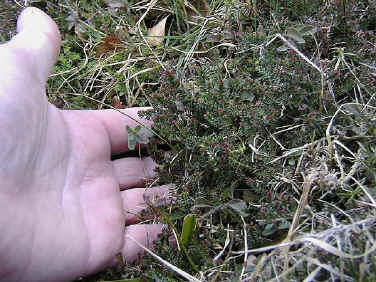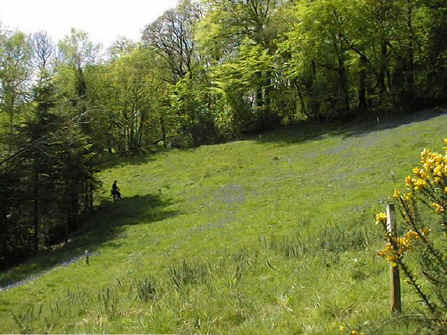Heathland Project Report - Summary Continued
Summary points 1-10 11-16 17-18 19-26
11. The results indicate that the vegetation on the Offwell project site is making slow but steady progress towards becoming a dry heath community. Heather and Bell Heather are both present and are gradually spreading on the site. (Distribution)

Reseeding with heather cuttings has not been necessary, as the Heather is regenerating naturally. (Heather Life Cycle Stages)
Common Gorse is one of the most dominant species overall (Table), while Western Gorse is just beginning to establish on the site. More Information.
12. Many other plants characteristic of heathland communities are now present on the project site. (These species are all marked with an asterisk * in the species list.)
These include Bristle Bent, Tormentil, Heath Speedwell, and various sedges and rushes. Species indicators for acidic soils are present. More Information.
13. Mosses are increasing in importance in terms of abundance. Polytrichum formosum, which favours acid soils is now the third most dominant plant overall (Table). Other Polytrichum species more characteristic of heaths (P. juniperum and P.piliferum) will presumably colonise the area in time. Several other mosses characteristic of heathlands are present. The presence of the moss, Brachythecium rutabulum, may indicate that the soil is currently more fertile than would be normal on an established heathland site. More Information.

14. The northern sections of the project site (5 - 9) are the most favourable for the development of heath species. Sections 1 - 4 (pictured right), still have many woodland species and are strongly influenced by bordering woodland. They show little sign of regenerating heath vegetation. More Information.
15. Plant species diversity is higher on the project site than would normally be expected for a dry heath community. This reflects the fact that the site is in transition. More Information.
16. In 1997, all the sections were quite dissimilar in terms of the species present in them. This is a reflection of the extremely varied seed bank regenerating on the site. By 1998, the sections had many more species in common (although the amount of each species in a particular section varies considerably). The increasing species similarity between sections results from the disappearance of species not suited to current conditions on the site, and the spread of those favoured by current conditions. Current conditions are the result of both prevailing weather conditions and the management regime. More Information.
| Heathland Restoration Project Report | ||||
Other Lowland Heaths in East Devon
